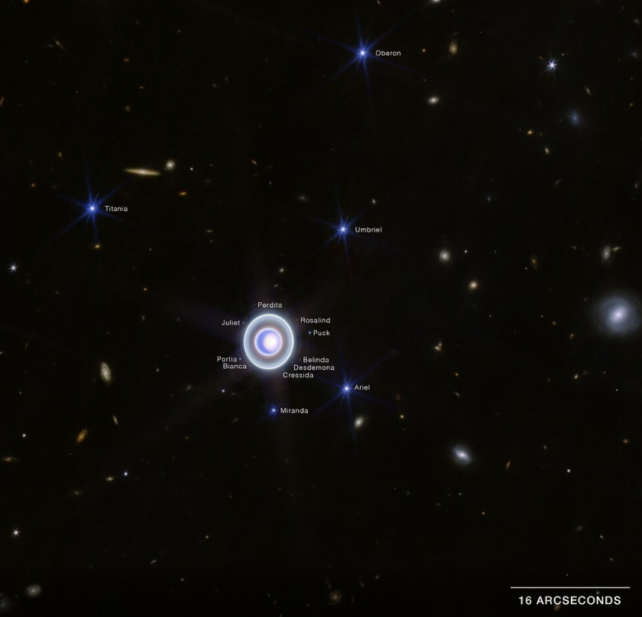NASA's James Webb Space Telescope has done it again.
An enhanced image from the high-powered telescope orbiting in space shows the planet Uranus in stunning new detail.
The photo captures the icy blue planet's elusive rings, atmospheric storms, and many of its 27 moons.

On Monday, NASA the image, which expands on a snapshot revealed earlier this year of the icy tilted world.
The images are a massive step up from the Hubble Space Telescope's attempt, which can barely make out one faint ring around Uranus.

The newly enhanced image shows details of the planet's seasonal "cloud cap" that swirls over its north pole.
Scientists said the polar cap becomes "more prominent" when Uranus tilts toward the sun as part of its 21-year-long winter.

The image also shows bright storms just below the cap.
"The number of these storms, and how frequently and where they appear in Uranus's atmosphere, might be due to a combination of seasonal and meteorological effects," NASA said in a press release.
Uranus is an oddball planet
Uranus is an especially odd planet in our solar system because it rotates basically on its side at an angle of 98 degrees.
That gives it the most extreme seasons of any planet in our solar system, per NASA.
For example, a Uranian year lasts about 84 Earth years. Due to Uranus's wonky tilt, the sun only shines on one pole for a quarter of an entire Uranian year, leading to a very long winter that lasts 21 Earth years.

Uranus is approaching a critical moment in its orbit around the sun. In 2028, the planet will reach its next solstice and the north pole will point directly at the sun.
NASA said that astronomers are eager to watch how this transition will transform the planet's storm systems, polar cap, and other features.
Moreover, as Webb continues to peer into the cosmos, new insights from its images of Uranus could help researchers learn more about the peculiar planet's complex atmospheric conditions.
This article was originally published by Business Insider.
More from Business Insider: